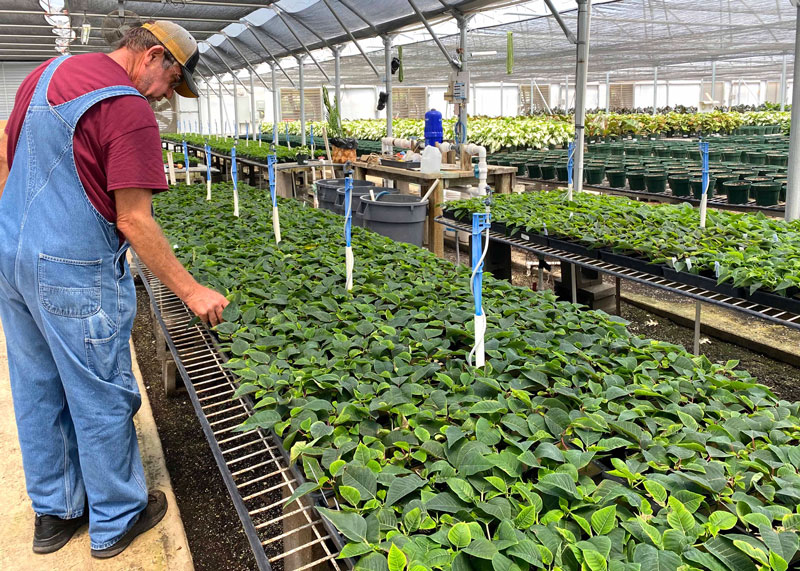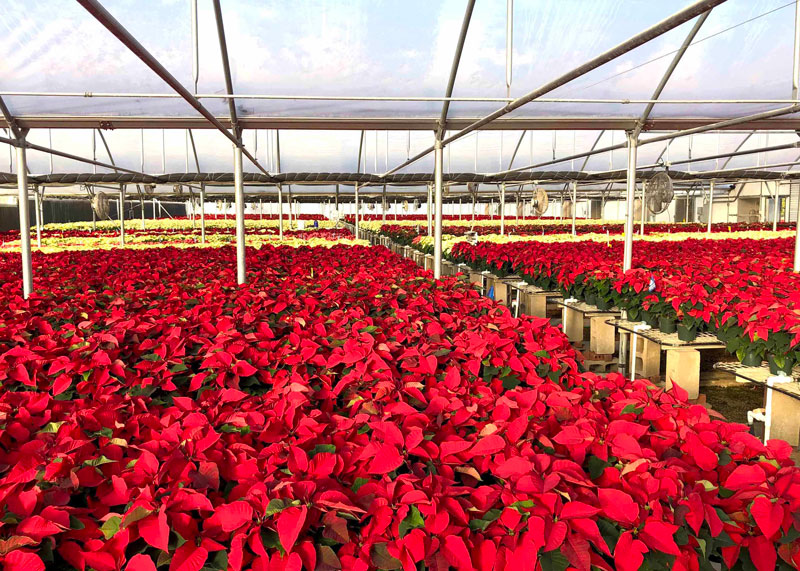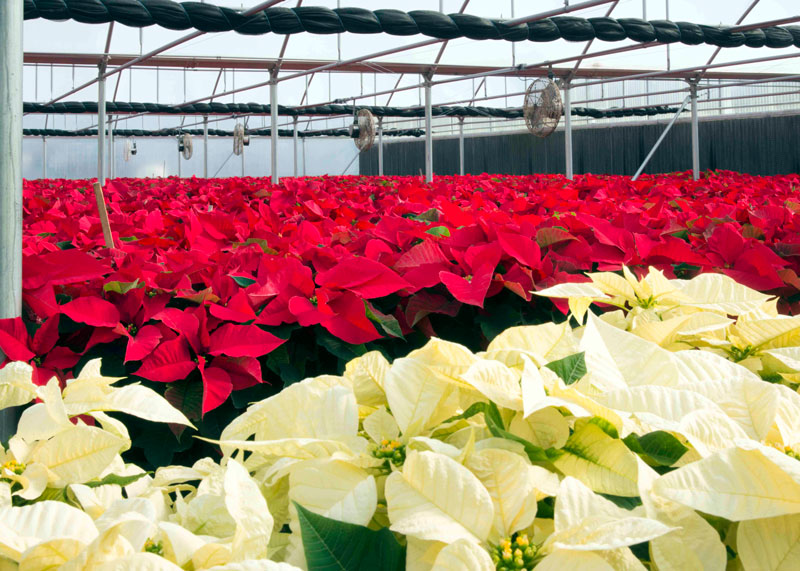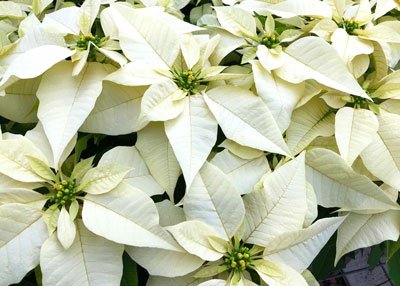Just in my Lifetime…

When I was a kid, poinsettias were raised in big pots, three plants to a pot. They had to be staked because the plants grew too tall and they often broke during handling. Elizabeth Ecke was the most popular variety, a bright red grown by the already-famous Ecke family of Southern California, pioneers in the poinsettia industry.
While I was in college at Ohio State research was underway to find self-branching varieties that only needed one plant per pot. They stayed compact and they held their lower leaves so there would be no need to fill the bare stems with asparagusferns and other greenery. That was a huge step forward.
And things have just gotten better and better. New colors. Still more compact habits. Variegated foliage. Unusual forms. So many options.
Growers love this crop because they can start with unrooted cuttings in August and have luxuriantly beautiful plants to sell by Thanksgiving. Few other crops come along any more quickly or any more predictably.

My good friend Kenneth Cranfill of Lucas has just retired after 38 years of producing the most picture-perfect poinsettias you’ve ever seen. Of course, to ask Kenneth, they were always like my mom’s cinnamon rolls. There was always some one thing that could have been better, but most of us mere mortals couldn’t have seen it if he’d pushed our noses into it. Oh, I already miss seeing those big greenhouses filled with all that beauty each fall (and the incredible array of bedding plants in the spring).


Kenneth is enjoying his retirement by spending time with his grandkids – and moving furniture in an outreach program for his church almost every day. He’s far from retired! I pick great and hard-working friends!

As for that poinsettia you’re enjoying this year…
• Keep it moist and bright. If you let it dry to the point of wilting it will lose its lower leaves.
• Don’t worry about feeding it over Christmas. The grower sent it to you with ample nourishment.
• Protect it from freezing temperatures.
• If you’re going to grow it outdoors this year, leave it in a pot and gradually repot it into successively larger containers. You’ll have to give it total darkness for 14 hours each night beginning October 1, but 10 hours of direct sunlight each day if you want it to bloom by Thanksgiving.
Note: If you will be taking a poinsettia home from church in the next few nights, remember than even 30 seconds of exposure to below-freezing temperatures can kill them. Have the car pre-warmed. Cover the plant with a newspaper or lightweight towel and hustle it into protection.

